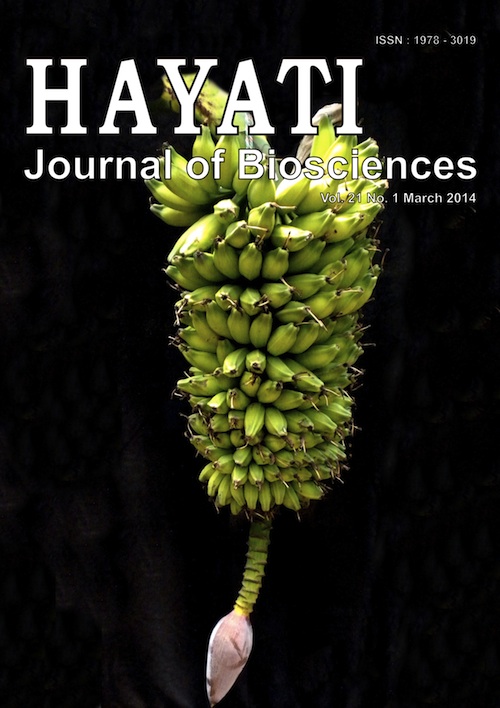Independent Effects of Temperature, Salinity, Ammonium Concentration and pH on Nitrification Rate of the Ariake Seawater Above Mud Sediment
Abstract
The Ariake Sea located in the west parts of Kyushu Island is a semi-closed and macro-tidal shallow sea, and has the largest tidal flat in Japan. A large mud tidal flat with a productive ecosystem found along the western shoreline of the sea makes this area ideal as a major production site of nori (Porphyra yezoensis) in Japan. We determined the independent effect of temperature, salinity, ammonium concentration and pH on nitrification rates (NR) in the Ariake seawater above the mud sediment. The NR was determined by measuring accumulation of NO2-N production after adding sodium chlorate, an inhibitor of NO2-N to NO3-N oxidation. NRs were relatively high at 20-35 oC (optimum at 29.5 oC), but the rates were very low at 5, 10, and 40 oC. NRs increased sharply when increasing the salinity from 13 to 20 ppt, but it decreased drastically at salinity levels more than 35 ppt (optimum at 19 ppt). The relationship between ammonium concentration and NR showed a typical kinetic curve of enzymatic reaction with the maximum NR (Vmax) of 0.029 mM N.h-1 at 200 mM NH4-N (the half saturation constant (Ks) = 35 mM NH4-N). High NRs were determined at pH 7.5-8.0 (optimum pH 7.8). This is the first report on the independent effects of temperature, pH, salinity and NH4-N concentration on the NR of seawater, specifically the Ariake seawater.
Downloads
HAYATI J Biosci is an open access journal and the article's license is CC-BY-NC. This license lets others distribute, remix, tweak, and build upon author's work, as long as they credit the original creation. Authors retain copyright and grant the journal/publisher non exclusive publishing rights with the work simultaneously licensed under a https://creativecommons.org/


















.png) IPB University
IPB University Department of Biology
Department of Biology The Indonesian Biological Society
The Indonesian Biological Society 

